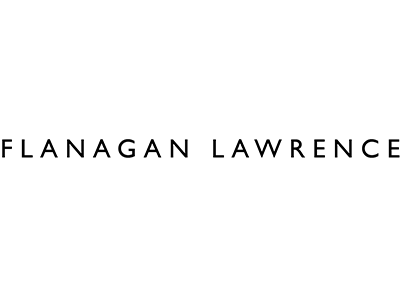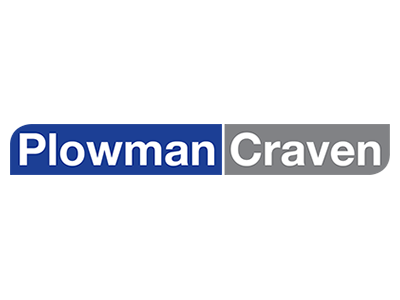5 ways our customers are innovating with Inevidesk
Inevidesk came about because, although we could see the clear benefits of VDI, we found that existing solutions were too expensive, complex, and under-performing. Our aim was to design a high-performance, easy to implement, and accessible alternative which would address the specific needs of the industry, regardless of an organisation’s size or budget.
Since launching Inevidesk to the market in September 2020, we’ve worked hard to build a strong – and growing – customer base which not only includes some of the biggest names in the UK’s AEC industry but also, importantly, several small- and mid-sized organisations.
The benefits it offers means we strongly believe our model will become the new infrastructure standard for the AEC industry – a belief that’s bolstered by the experience of our clients, and the growing number of organisations moving on to the Inevidesk platform.
Want some inspiration for how we can help? Here are five ways our customers are innovating with Inevidesk…
Freeing up office space
Cullinan Studio was an early adopter of Inevidesk, and one of the first architects to migrate to our fully hosted platform, effectively moving its entire server infrastructure and workstation resources to the cloud. Everyone, no matter where they were based, was working on the same infrastructure with the same high level of performance.
Perhaps most importantly, Inevidesk allowed Cullinan to make better use of its building – a Victorian, former industrial property on the canal side in Islington. Post-pandemic, the practice adopted a hybrid working model whereby staff were able to work a certain number of days from home. Knowing its office space would be used less in the future, the studio needed a plan to ensure the building could be used efficiently. Moving to the Inevidesk hosted platform was key to achieving this.
Using cloud-based virtual desktops, the team no longer required dedicated workspaces for each employee. This allowed the studio to pull its own footprint back to just one of the building’s three floors. Cullinan used the newly free space to create a multi-disciplinary hub which it could sublet to tenants, creating a community of complementary professionals including engineers, wayfinding experts, environmental and sustainability consultants, and Inevidesk itself.
Bringing architects back to the office
dMFK Architects was moving to a new space in Fitzrovia, in which it wanted to accommodate a growing team, bringing everyone back together after the pandemic. Working with Inevidesk aligned the business’s aesthetic, technical, and collaborative aspects.
The company’s basic requirements were to replace a suite of aging workstations and server hardware, while minimising the complexity of the office move. Migration to the Inevidesk hosted platform meant much less equipment to move, less technical set-up in the new location, and minimised disruption due to the activation of the new cloud service as the old office closed down.
It also wanted to ensure that any investments in technology would contribute to the new office experience. Relinquishing on-premise servers and fixed tower workstations promised more space, allowing more desks to fit comfortably in the office. Cables were hidden and minimised, small form PCs used to create a clean, uncluttered environment, and staff could sit wherever they liked on any given day.
Untethering from a cumbersome environment
The practice had been working on rationalising its infrastructure for a while: a mix of legacy workstations and servers that still clung to the historical technical architecture of the building with its large server rooms, tangled under-floor cabling, and attendant elements. So, when the decision was made to move office, it was a clear opportunity to modernise and leave the past behind.
To enable future flexibility, the practice chose The Building Society’s co-working hub in Fitzrovia, a change further simplified by migrating to Inevidesk’s hosted platform prior to the move. Staff were effectively able to take their laptops home one evening and plug them in at the new location the next working day.
Flanagan Lawrence is now in a position where it can react quickly to new opportunities, fully confident that the team can continue to deliver their work at a high level, without disruption.
Greater power and performance
Providing measurement and surveying services to the property, rail, and infrastructure sectors, Plowman Craven deals with huge amounts of data and enormous models that require expensive resources to process. Historically, this would be undertaken on expensive standalone workstations where jobs can run for days at a time.
Inevidesk delivered a bespoke solution that provided Plowman Craven with the power it needed to process jobs more quickly, safe in the knowledge that its work is protected by server-class infrastructure for 24/7 uptime.
Connecting overseas offices
Connecting to Inevidesk virtual desktops located in their London offices alongside their servers and a number of physical workstations enables both Hutchinson & Partners’ Berlin-based team and Weston Williamson + Partners’ Toronto-based team to work seamlessly with their UK-based colleagues while ensuring all company data stays in one location.
Inevidesk’s service is paired with the best performing remote desktop technology currently available. Although we’re agnostic about the technology used, in these cases it’s provided by Unity-owned Parsec, offering extremely low latency video streaming with optimised responsiveness, which gives incredible performance, even over very low bandwidth connections.
Growing confidence
The examples above illustrate just a few of the benefits Inevidesk can introduce to an organisation, such as improving performance, agility, resiliency, efficiency, and collaboration. We can help our clients reduce their environmental impact, too. Using Inevidesk can help companies reduce their travel, their office footprint, and the amount of equipment they run. What’s more, our virtual desktops use a fraction of the energy required to run traditional physical workstations, and our hosted services run in a data centre using 100% renewable power.
It was a privilege to share these stories in Architecture Today’s webinar – Digital transformation in Practice: Benefits and Challenges. Stories like these give me growing confidence that, in time, our model will become the infrastructure standard for the AEC industry. You can watch my presentation at 43:40 here: https://architecturetoday.co.uk/digital-transformation-in-practice-benefits-and-challenges-webinar/








